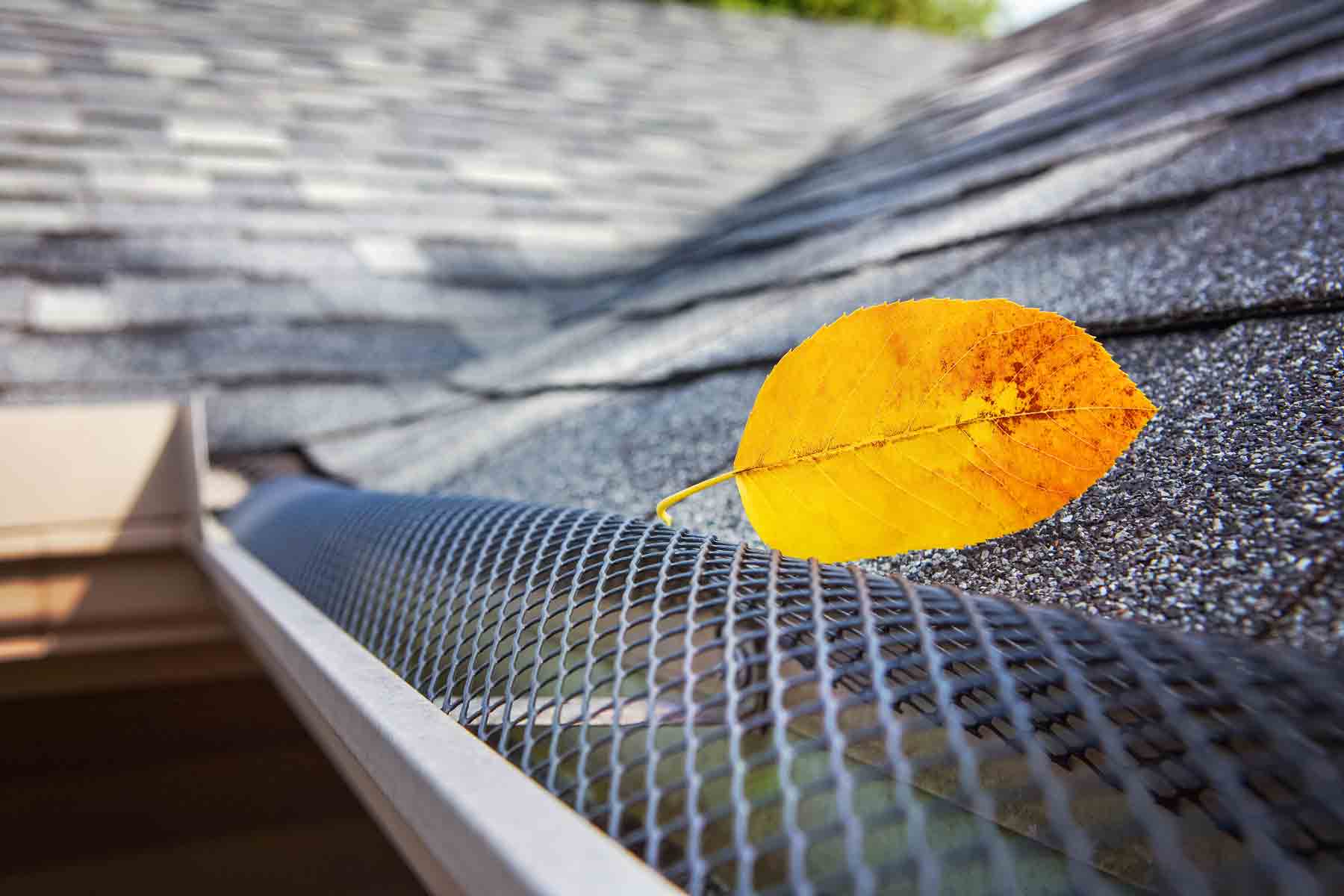Gutters are one of the most essential yet underappreciated components of any home. They silently guide rainwater away from your roof, foundation, and landscaping, protecting your property from water damage. However, their function is often compromised by one common and persistent issue—clogging caused by leaves and debris.
If you’re a homeowner who’s tired of climbing ladders twice a year to dig out wet leaves and muck, it’s time to consider a better solution. That’s where modern gutter protection systems come in. Among the most effective and popular of these is the leaf guard.
This article will walk you through what a leaf guard is, how it works, the benefits it offers, and what to consider before investing. With the right information and tools, you can stop worrying about blocked gutters and focus on protecting your home for the long haul.
The Problem with Clogged Gutters
Before diving into solutions, it’s important to understand the real cost of clogged gutters. At first glance, a few fallen leaves might not seem like a big deal, but over time they can:
- Prevent water from draining properly
- Cause gutters to overflow, spilling water down the sides of your home
- Lead to rotting fascia boards and soffits
- Create standing water that attracts pests
- Result in ice dams during colder months
- Trigger basement leaks and foundation damage
Even a small clog can cause a cascade of problems, all of which can be expensive and time-consuming to fix. That’s why so many homeowners are turning to preventative measures like a leaf guard to stop debris before it becomes a hazard.
What Is a Leaf Guard?
A leaf guard is a protective covering or insert installed over your existing gutters to block leaves, twigs, pine needles, and other debris from entering the system. While water is allowed to flow through, solid materials are kept out, preventing blockages and reducing the need for frequent cleanings.
There are several types of leaf guard systems available, each with its own design, benefits, and price point:
- Screen Guards: Metal or plastic mesh that fits over the top of the gutter
- Micro-Mesh Guards: Fine stainless steel mesh that blocks even tiny debris like shingle grit
- Reverse Curve Guards: Curved covers that use surface tension to direct water in while debris slides off
- Foam Inserts: Porous foam that sits inside the gutter, allowing water through but blocking debris
The best type for your home depends on factors like roof pitch, tree coverage, gutter size, and budget. A properly installed leaf guard can eliminate up to 95% of manual cleaning needs, though some occasional maintenance may still be necessary.
Key Benefits of Installing a Leaf Guard
Homeowners who install gutter protection systems typically see a number of immediate and long-term benefits. These include:
1. Reduced Maintenance
One of the most obvious advantages is fewer trips up the ladder. Instead of cleaning gutters multiple times a year, you may only need to inspect them annually. This is especially helpful for aging homeowners or those with multi-story homes where gutter access is limited.
2. Extended Gutter Lifespan
Clogs lead to standing water, which causes corrosion and sagging over time. A leaf guard keeps gutters dry and clean, extending their functional lifespan and reducing the likelihood of premature replacement.
3. Prevent Water Damage
Water spilling over clogged gutters can find its way into siding, window frames, and the foundation. By maintaining a clear path for drainage, you avoid structural water damage that could cost thousands to repair.
4. Pest Deterrent
Stagnant water and organic debris are ideal breeding grounds for mosquitoes and other pests. Birds, squirrels, and rodents may also nest in unprotected gutters. A covered system eliminates their access points.
5. Improved Home Value
A professionally installed leaf guard can be an attractive feature for potential buyers. It signals that the home has been well-maintained and adds to the overall value of your property.
When Is the Right Time to Install a Leaf Guard?
You don’t have to wait for a disaster to invest in prevention. If any of the following apply to your home, now may be the right time to act:
- You live near tall trees that shed seasonally
- You’ve had to clean your gutters more than twice a year
- You’ve noticed water spilling over during heavy rain
- You see signs of rot near the fascia or soffits
- You’ve experienced pest problems originating near the roofline
Installing a leaf guard is much easier—and more cost-effective—before a problem escalates. Whether you’re replacing your gutters or upgrading your current system, it’s an ideal addition for long-term peace of mind.
Common Misconceptions About Gutter Guards
Despite their growing popularity, there are still a number of myths and misunderstandings around gutter protection. Let’s clear some of them up:
Myth 1: “They Eliminate Cleaning Forever”
No leaf guard system is completely maintenance-free. While they drastically reduce the need for cleaning, occasional inspection is still required to ensure no buildup is occurring on top of the guard or around the edges.
Myth 2: “They Don’t Work in Heavy Rain”
Some older designs had trouble handling large volumes of water. However, modern systems—especially micro-mesh and reverse-curve types—are built to withstand even torrential downpours without overflowing.
Myth 3: “They’re All the Same”
Not all gutter guards are created equal. Material quality, design, and installation method can vary significantly. Investing in a well-reviewed product and professional installation will yield far better results than a cheap DIY kit.
Choosing the Right System for Your Home
When selecting a leaf guard, there are a few important considerations to keep in mind:
- Material: Aluminum and stainless steel last longer than plastic, especially in extreme weather.
- Compatibility: Ensure the guard fits your existing gutters or be prepared to upgrade them.
- Installation: Some systems require professional installation to be effective and come with warranties.
- Warranty: Look for products that offer protection against defects or clogging for added peace of mind.
- Cost vs. Benefit: Don’t just focus on the upfront cost—consider the long-term savings in maintenance and potential water damage.
Consulting with a professional installer can help you evaluate your specific needs and choose a system that provides optimal protection.
DIY vs. Professional Installation
Some gutter protection systems can be installed by homeowners, but most require specific tools and techniques to be effective. Here’s how the two compare:
DIY Installation
- Pros: Lower initial cost, immediate installation
- Cons: Less durable, poor fit, no warranty, higher risk of ineffective results
Professional Installation
- Pros: Precision fit, expert advice, long-term warranty, high-performance systems
- Cons: Higher upfront cost
In most cases, the added investment of professional installation ensures the leaf guard functions exactly as intended, delivering better performance and longer lifespan.
Maintenance Tips After Installation
Even with a high-quality gutter guard system, some minor upkeep is necessary to ensure continued performance. Here are some tips to keep everything running smoothly:
- Inspect gutters twice a year, especially in spring and fall
- Remove debris that may collect on top of the guards
- Check downspouts for flow and remove any obstructions
- Look for signs of overflow after heavy rain
- Examine surrounding trees and trim overhanging branches when needed
By following these simple steps, your leaf guard system can provide many years of nearly hands-free gutter protection.
Conclusion: A Smart Investment for Every Home
Clogged gutters are more than just an inconvenience—they’re a potential threat to your home’s structure, safety, and value. Whether you’re dealing with constant leaf buildup, pest problems, or recurring water damage, installing a leaf guard is one of the most effective preventative steps you can take.
The right system reduces maintenance, extends the life of your gutters, and protects your home from costly repairs. From mesh screens to advanced micro-guards, there’s a solution for every home and every budget.
Don’t wait for the next storm to find out your gutters are clogged. Make the proactive choice—install a leaf guard and enjoy peace of mind knowing your home is well-protected.





























